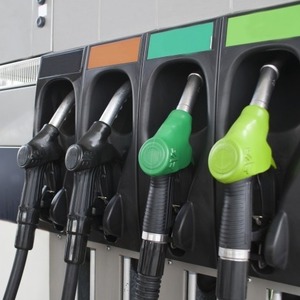EIA: summer ethanol blending to increase 20,000 barrels per day

April 11, 2017
BY Susanne Retka Schill
Gasoline prices are forecast to be higher this summer compared to last year, according to the U.S. Energy Information Administration’s Short-Term Energy and Summer Fuels Outlook. “Even though gasoline prices this summer are expected to be 10 percent higher than last year, U.S. highway travel and gasoline demand are expected to increase,” acting EIA administrator Howard Gruenspecht said in the report.
Fuel ethanol blending into gasoline this summer is projected to increase by almost 20,000 b/d from last summer’s level to 960,000 b/d, which is 10.1 percent of total gasoline consumption. In the U.S. gasoline summer outlook table, EIA shows forecast fuel ethanol blending in Q2 2017 will be 0.956 million barrels per day (mb/d), up 2.1 percent from the same period a year ago. Q3 projections call for 0.970 mb/d, up 1.3 percent from that period a year ago. The summer season is expected to average 0.963 mb/d, up 1.7 percent from 2016’s summer blending average of 0.947 mb/d.
Advertisement
Price projections call for wholesale gasoline to average $1.72 in Q2 and Q3 of 2017, which would be up 8.7 percent from Q2 2016 and up 14.6 percent from Q3 a year ago, for an increase of 11.7 percent for the season. Retail gasoline prices, including taxes, are expected to average $2.46 for the 2017 season, up 10.4 percent for the same period a year ago.
In discussing the forecast price trends, the EIA’s STEO explained the Brent crude oil price is forecast to average $54/b ($1.29/gal) this summer, compared to $46/b ($1.09/gal) last year. The agency also expects wholesale gasoline margins will be 2 cents/gal lower than last year, averaging 43 cents/gal this summer.
“The market’s expectation of uncertainty in monthly average gasoline prices is reflected in the pricing and implied volatility of futures and options contracts,” the STEO says. “New York Harbor reformulated blendstock for oxygenate blending (RBOB) futures contracts for July 2017 delivery that were traded over the five-day period ending April 6 averaged $1.70/gal. The probability that the RBOB futures price will exceed $2.00/gal (consistent with a U.S. average regular gasoline retail price above $2.75/gal) in July 2017 is 8 percent. The probability that the RBOB futures price will fall below $1.50/gal (consistent with a U.S. average regular gasoline retail price below $2.25/gal) in July 2017 is 17 percent.
Advertisement
“For all of 2017, the average retail gasoline price is forecast to be $2.39/gal, which if realized would result in the average U.S. household spending about $200 more on transportation-related expenses in 2017 compared with 2016. Despite this expected increase in expenditures, average household transportation expenses are forecast to be about $300 lower this year compared with average annual expenditures from 2012-16.
For summer 2017, EIA forecasts motor gasoline consumption to average 9.5 million barrels per day (b/d), up about 20,000 b/d (0.3 percent) compared with last summer, which was a record high. Highway travel is forecast to be 1.4 percent higher than the level last summer. The effect of the increase in highway travel is expected to be partially offset by a 1.2 percent increase in fleet-wide vehicle fuel efficiency.
Related Stories
The U.S. exported 31,160.5 metric tons of biodiesel and biodiesel blends of B30 and greater in May, according to data released by the USDA Foreign Agricultural Service on July 3. Biodiesel imports were 2,226.2 metric tons for the month.
CARB on June 27 announced amendments to the state’s LCFS regulations will take effect beginning on July 1. The amended regulations were approved by the agency in November 2024, but implementation was delayed due to regulatory clarity issues.
Legislation introduced in the California Senate on June 23 aims to cap the price of Low Carbon Fuel Standard credits as part of a larger effort to overhaul the state’s fuel regulations and mitigate rising gas prices.
The government of Brazil on June 25 announced it will increase the mandatory blend of ethanol in gasoline from 27% to 30% and the mandatory blend of biodiesel in diesel from 14% to 15%, effective Aug. 1.
The U.S. EIA reduced its 2025 and 2026 production forecasts for a category of biofuels that includes SAF in its latest Short-Term Energy Outlook, released June 10. The forecast for 2025 renewable diesel production was also revised down.
Upcoming Events









